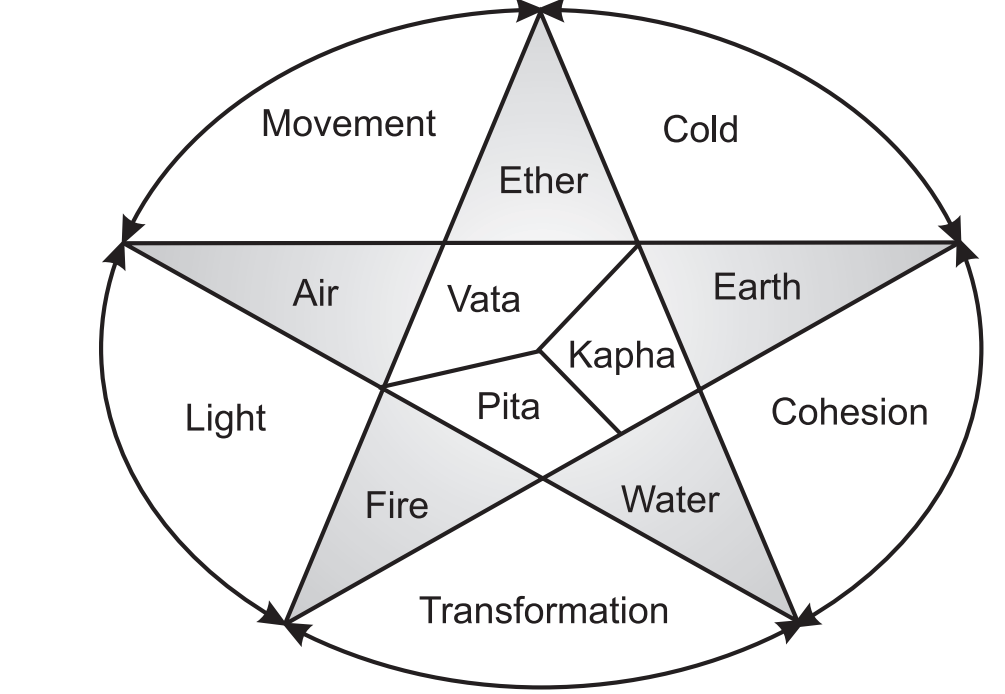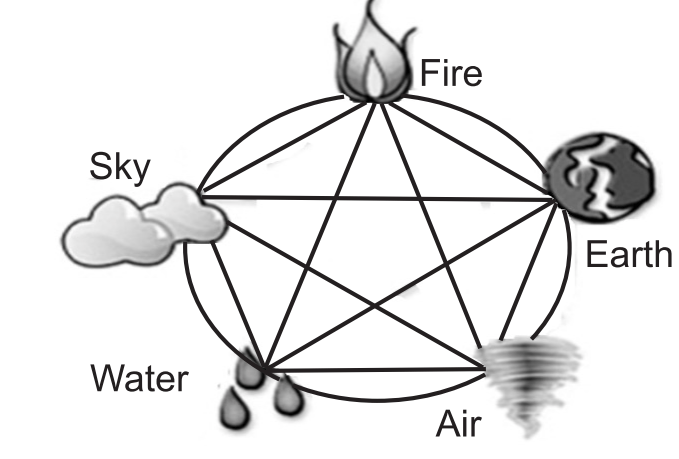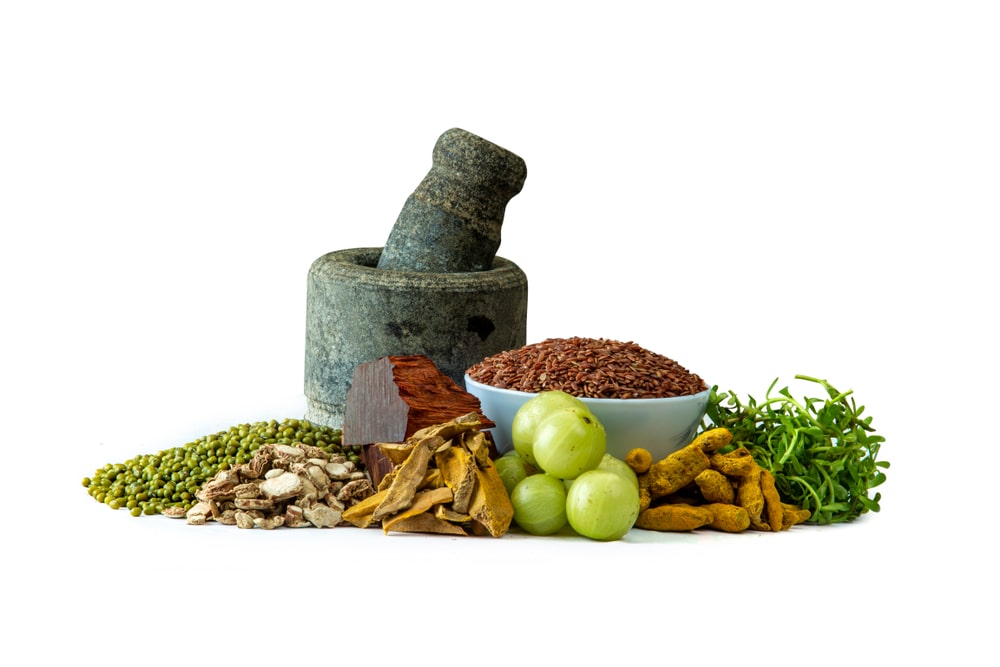Ayurveda is originated from Sanskrit, composed of “ayus” and “Veda.” “Ayus” stands for life and “Veda” is knowledge of science. Ayurveda is in combination, ‘the knowledge of life’ or ‘the science of life. According to Charaka (the ancient Ayurvedic scholar), “ayu” means the mind, body, senses, and soul.
Ayurveda is an intricate medical system that is one of the oldest forms of the healthcare system, originated in India thousands of years ago. The fundamentals of Ayurveda are found in the Vedas (Hindu scriptures) — the ancient Indian books of wisdom. The Rig Veda (written over 6,000 years ago), contains a series of prescriptions to overcome various ailments of humans.
The aim is to prevent illness, heal the sick and preserve life as follows:
- “Swasthyas swasthya rakshanam“: This indicates prolonged life with health protection.
- “Aturasya vikar prashamanamcha“: This indicates the elimination of diseases and dysfunctions of the body.
Table of Contents
Basic Principles:

The Universe is made up of five elements: air, fire, water, earth, and ether as per Ayurveda. All these together are known as “Panchabhuta” (Fig. 1.1). These elements are interconnected with the human body by three “doshas” namely Vata, Pitta, and Kapha. Any of the doshas accumulate beyond the desirable limit in the body; the body loses its balance. Every individual depends on getting the right balance of these three doshas (“tridoshas”). Ayurveda suggests a healthy lifestyle and nutritional guidelines to help the body to reduce the excess doshas (Fig.1.2).
Sushrut Samhita said a healthy person works on Ayurveda, with the balance of doshas, appetite is good, all tissues of the body and all-natural urges are properly functioning, and whose mind, body, and spirit are cheerful.
Tridosha or the Theory of Bio-energies:
The three doshas that are found in our body:
- Vata pertains to air and ether elements that act as the force. It directs nerve impulses, circulation, respiration, and elimination.
- Kapha pertains to water and earth elements. Kapha is responsible for growth and protection. Examples: The mucosal lining of the stomach, the cerebral-spinal fluid, etc.
- Pitta pertains to fire and water elements that deal with metabolism, e.g., the transformation of foods into nutrients. It helps in metabolism in the organ and tissue systems.
‘Panchakarma’ or the Therapy of Purification:
Panchakarma is recommended to purge these unwanted toxins if any present inside the body. It is also known as the much purer cleansing process.
These specialized procedures consist of the following:
- Vaman: It indicates therapeutic vomiting or emesis.
- Virechan: It indicates Purgation.
- Basti: It indicates Enema.
- Nasya: It indicates the elimination of toxins through the nose.
- Rakta moksha: It indicates bloodletting or detoxification of the blood.

Treatment in Ayurveda:
Ayurveda has eight different techniques to diagnose illness, namely Nadi (pulse), Mootra (urine), Mala (stool), Jihva (tongue), Shabda (speech), Sparsha (touch), Druk (vision), and Aakruti (appearance). The treatments are carried out using plant-based products procured from roots, leaves, fruits, bark, or seeds.
Ayurvedic Dosage Forms and their Evaluation Methods:
Ayurvedic dosage forms can be grouped into four types depending on their physical nature. A) Solid dosage forms like Vatika, Gutika B) Semisolid dosage forms like Kalka, Aveleha, C) Liquid dosage forms like Arista, Asava, Taila, D) Powder dosage forms like Churna.
All the Ayurvedic preparations consist of two words. The first word may indicate either the disease for which the preparation is used (Jwarantaka Vati) or the property of the preparation (Kaameshwara-Modaka) or the drug contained (Arjuna Arista) or the name of some God or Saint (Narayana Taila) and the second word always indicates the type of preparations (Arista, Vati, Taila, etc.).
Standardization of Ayurvedic Preparations:
Ayurvedic medicines are manufactured under different pharmaceutical processes to result in various dosage forms such as extracts, tinctures, decoctions, pills, powders, tablets, capsules, semisolid pastes, jellies, syrups, etc. The general standardization protocols to determine the percentage of active medicaments could not be followed for Ayurvedic herbal preparations. The procedures have to be modified to make the preparation safe. This is because of a few reasons like:
- Ayurvedic preparations are polyherbal or herbomineral preparations.
- Even a single herb is used in the preparation, the single herb will contain multiple constituents.
- Bioactive chemical constituents are not known in the herbal preparation and even if it is known and compared with the markers, it does not necessarily reflect its connection with biological effects.
- The principle of a holistic approach does not permit assaying a single marker.
So the approach has to be made from raw materials to finished products for the successful outcome.
Role of Pharmacognosy in Ayurveda Medicine System:
Herbal drugs play a major role in the formulation of Ayurvedic medicines. Many medicinal plants that are used in Ayurveda are selected based on plenty of availability, low cost, fewer side effect, effective therapeutic efficacy, and also low toxicity. Ayurvedic formulations that are available in the market are composed of more than 5 to 10 medicinal plants either from leaves or roots or bark or flower parts as sources. A vast number of crude drugs that are used in Ayurvedic preparations, procured from the plant sources which belong to the Pharmacognosy.
Pharmacognosy helps in the development of Pharmacopoeial standards for herbal drugs for identification followed by characterization. Hence, correct authentication of crude drugs is the preliminary source for the Ayurvedic medicine system for combined formulation. Thereafter Pharmacognosy helps in the identification of drugs through morphology and microscopy examinations that further helps in the detection of adulterants as well as substituents. Hence authenticated drugs are used for the formulations which give proper therapeutic actions with fewer side effects.
Furthermore, Pharmacognosy helps in the identification, detection, and isolation of the phytochemicals which gives an idea for root-level curing of the diseases. Seventy percent of the population in rural India is dependent on the ayurvedic system of medicine which is of plant origin.
Ayurvedic products in the Indian market are projected to register a CAGR of 16% during 2016-2021. It is predicted that many Ayurvedic formulations viz. Ayurvedic nutraceuticals and dietary supplements, Ayurvedic cosmetics, and skincare products are likely to boost the market over the years. Awareness of side-effects of allopathy and health concerns is a few of the major factors driving consumer preference for Ayurvedic products in the country. There are more than 5000 plants which are used in Ayurveda among that some of the major plants are namely Ashwagandha, Ashoka, Triphala, Amla, Arjuna, Turmeric, Shatavari, Tulsi, Haridra, Neem, Rauwolfia, Gymnema, Pudina, Hibiscus, Lemongrass, Henna, Black pepper, Clove, Cinnamon, Ginger, etc.
Make sure you also check our other amazing Article on : Principles of homeopathy
